Printmaker Kevin Hogan remembers a River Arts District that wasn’t yet named. It was a forgotten part of town, with pockets of lingering industry, but mostly vacant buildings east of the French Broad River. A significant amount of his memory surrounds the Chesterfield Mill. In the early ’90s, Hogan and a small group of makers ran the Asheville Working Press — a fine arts printshop — out of the old mill. “For me, it was always about affordability,” he says. “For 300 bucks a month we probably had 15,000 square feet.”
Nostalgia quickly sets in. Hogan recalls the 14-foot-high ceilings and the sweeping windows overlooking the train tracks, as well as the remnants of the building’s former life — machinery in some places, grains and syrup in others. It takes him a moment to recall whether or not the place had running water. It did. “We plumbed in one bathroom,” he says.
Heating, however, was not among the former mill’s amenities. “I remember the thermometer being very often below freezing. We had to fire up one of those old kerosene rocket heaters. It was really primitive living.”
The building no longer stands. On April 2, 1995, it burned to the ground, taking with it the group’s printing equipment, darkroom and loft (which one maker called home for a brief period). “It was devastating for quite a few people,” says Hogan, noting that the fire jumped the tracks, consuming most of the Cotton Mill’s 122,000-square-foot facility, which had just started renting out artist studios, as well.
After the fire, Hogan transformed his Montford home into his workspace. Twenty years later, he struggles with conflicting feelings about the place he once called home. “Sometimes I feel like Dr. Frankenstein up on the battlements looking down at my monster terrorizing the village,” he says. “I have mixed emotions about what the RAD and Asheville are becoming.”
The times they are a-changin’
On a recent weekend stroll down Clingman Avenue, the sidewalk is bustling with visitors studying maps of the area and sipping iced coffees. Up Roberts Street, a pair of teenagers drive by in a black Mercedes-Benz, windows down, blasting Rob Zombie’s “Dragula.” Down the iron staircase, leading to the outdoor seating area at Wedge Studios, families and friends gather under large red, turquoise and tan umbrellas for a beer and some bites.
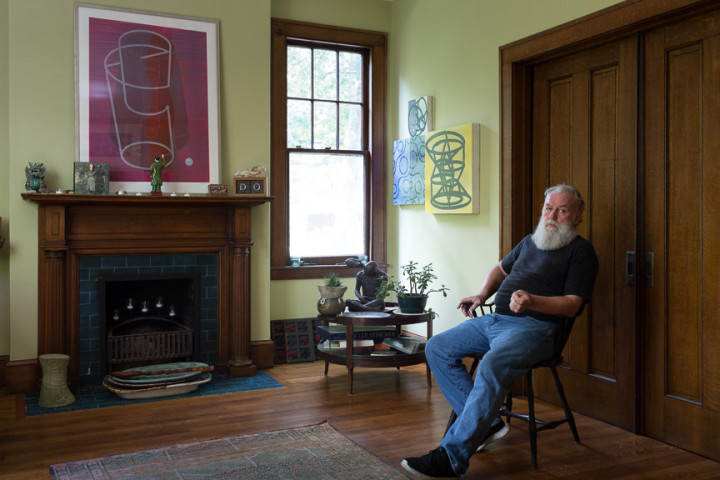
“Change is inevitable,” says Helaine Greene, owner of Riverview Station, who first came to the RAD in 1990. “The artists need an audience.” Greene acknowledges that the balancing act that comes with the growing popularity of the area can at times be tricky. There’s a push-pull among those in the district. Artists and makers need time and space to create, but they also need visitors to market their work to. “I think a community can exist with a mixture of things going on in it,” Greene says.
Over the next three years, there will be plenty going on in the area. The city will funnel over $50 million into infrastructure within the RAD. And while many of the artists, makers and building owners see the future sidewalks and bike lanes as positive additions, these same artists, makers and building owners worry over the future. Some fear the artists will be priced out. Others worry the buildings will “flip,” or be sold quickly for a profit. Many foresee the RAD becoming an extension of downtown, with retail shops replacing studio space.
Potter Michael Hofman, who has been in the RAD since 2007, has a simple wish shared by many with studios along the river. “I just hope we can keep the ‘arts’ in the River Arts District.”
Growing pains
Ambivalence permeates the district. As it did with Greene, the word “inevitable” comes up in nearly every conversation. Some speak it with a hint of despair, others address it matter-of-factly. Regardless of who is talking, you can almost hear the inner monologue going on inside their heads — the back-and-forth of what was, what is and what might be.
Robert Gardner came to the RAD in 1997. The glass and metal artist isn’t one to idealize the past. “There was drug activity and prostitution going on after the lights went out,” he says of the early days. “You used to have to sweep needles off the sidewalk.”
Yet he can’t ignore the trade-offs that come with the area’s growth. While the upside is an increase in sales, the downside includes a greater amount of interruption, as well as what Gardner and others view as a drop in artistic expression. “There’s a quality of tourists that come down to the River District,” he says, pausing to consider his words. “It’s not a crowd that’s compelling people to do bolder work.”
Hogan echoes this sentiment. He worries the district is falling away from meaningful dialogue about art, replacing it with “ignorant, cheerleading promotion.” Hogan adds, “We’re not a very critical environment, and that’s one of the things you really need to move forward in creative practice.”
Others find the growing popularity of the area lends itself to a fair share of awkward encounters. “Groups of people will come in just to stare at you while you’re working,” says printmaker and mixed-media artist Andy Herod. He says such happenings disrupt his process; with spectators, he explains, making art starts to feel like a performance. And while he insists that most of the interactions are positive, Herod can’t shake the sense that many visitors “expect to have a show put on for them.”
Down the street at Curve Studios, metalsmith Mary McCall Timmer speaks of her unofficial role as tour guide. “I give a lot of directions,” she says. “People come in wanting to know where to find a bathroom, things of that nature.” The frequency of such interruptions in the area is only increasing, at times proving counterproductive.
After five years, encaustic painter Julia Fosson is set to depart from the RAD at the end of the month. “It’s gotten so busy,” she says. “I could paint every day, all day long, and still not catch up.” Fosson plans to relocate to a home studio, in order to focus more on her work and less on the social aspects that the district demands.
For painter Phil DeAngelo, the interactions are part of the process. He views it as a mutually beneficial exchange. “People want to buy because they meet you,” he says. “They see you work, and they see your space. … It’s a great experience for us, because we’re now meeting the people who buy our work and we know why they’re buying it — what they love about it.”
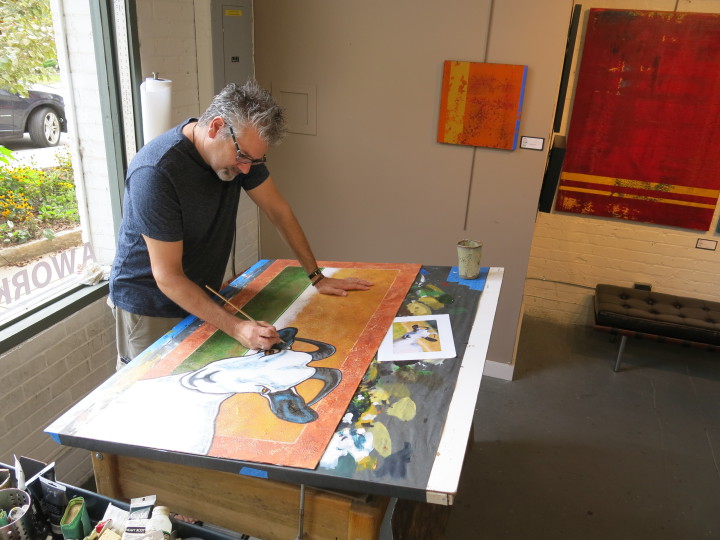
But an increase in foot traffic doesn’t necessarily mean an increase in sales. With breweries and restaurants in the area, artists are noticing something they wouldn’t have imagined a few years back. “People are coming down just because it’s a thing to do,” says Hofman. He says he assumes this trend will only continue as the city further develops the area as a tourist destination.
Longtime RAD artist John Mac Kah doesn’t shy away from voicing his concerns and dissatisfactions with such trends. Like Gardner, Mac Kah arrived to the district in 1997. And like Gardner, he worries that the quality of work is turning away from fine arts and more toward trinkets and T-shirts. This is among many disputed points within the district; while several share Mac Kah’s outlook, others, such as DeAngelo and Hofman observe that higher rents are leading to more established, higher-caliber artists coming to the area. Mac Kah points to the area’s audience as a measure of its quality. Before the 2008 crash, visitors from Denmark, Norway, Germany, England and France visited his then-Cotton Mill studio. Now, he laments that visitors comprise the “knuckling-dragging, beer-drinking, pizza-eating segment of the population, which will never buy a painting or a sculpture or anything.”
Yet, Mac Kah, who recently relocated to Riverview Station, welcomes the addition of The Foundation. The 13-acre, eight-warehouse lot sits behind Riverview. It was purchased last year by Brent Starck, Eddie Dewey and Chris Eller. Still in development, the property will be the new location for 12 Bones Smokehouse, as well as a second location for Wedge Brewing. “I think it’s great,” says Mac Kah. “It’ll bring traffic up the back stairs.”
Mac Kah recognizes the contradiction within his two statements. He clarifies that while he may not view most beer drinkers as art buyers, he is aware that art buyers also enjoy drinking beer. The proximity of such venues, he says, will help retain these potential buyers in the area for a longer period of time.
The ‘G’ word
In an email follow-up to his interview, Mac Kah compares the ecosystem of the RAD to a natural environment: “If you think of the river community as kind of an estuary, the artists are the wildlife, teeming with creativity and community spirit, then you realize how delicate the balance has to be to allow this to flourish in a meaningful way, not in a commercial way. What usually happens is the estuary is disturbed, polluted or drained for development, then the wildlife leaves, [and] what is left benefits the few. Then they name it ‘Wild Acres’ or ‘Eagles Landing.’”
Artists throughout the district voice similar concerns. They point to SoHo in New York City and Lincoln Park in Chicago. Others bring up Portland, Ore.; Sarasota, Fla.; Madison, Wis. and Scottsdale, Ariz. A 2014 report, “Alternatives to Gentrification In the East of the Riverway,” addresses these issues in the context of RAD development. It defines gentrification as “the phenomenon of wealthier people moving into a specific urban neighborhood or area, drawn by the location, the diversity and ‘feel’ of these neighborhoods and/or by the cost, availability, and desirability and appeal of houses or industrial buildings found in the neighborhoods. Gentrification generally snowballs, gathering momentum over time. Investors looking for ‘fixer-upper’ properties, artists, and other ‘urban pioneers’ move in. Word gradually travels that an attractive neighborhood has been ‘discovered’ and the pace of change tends to accelerate rapidly.”
Hedy Fischer, co-owner of Pink Dog Creative on Depot Street, recalls the first time she saw the 18,000-square-foot former textile warehouse, filled with cardboard boxes and a pair of guys selling items on Overstock.com. “We painted this building and divided it up so that it would have artist studios in it and a couple of restaurants,” she says. “We took a building that was way underutilized and in significant disrepair and made it really nice with our own blood, sweat and tears. It’s not like we have a development company. Did we gentrify it? Depends on how you define it.”
Definitions, of course, vary.
“It’s hard to say what people are using as their term for gentrification,” says Derek Dominy, co-owner of the Cotton Mill Studios. A recent New York City transplant, Dominy and his wife, Denise Carbonell, purchased the building in 2014. “In New York [gentrification] meant, ‘We’re moving out all the poor, nonwhite people and taking over,’” he says. But as Dominy (as well as many others in the district) points out, the arrival of the artists didn’t come at the expense of residents. Many artists say the abandoned buildings of Asheville’s former industrial heyday were given a new life once the artists arrived.
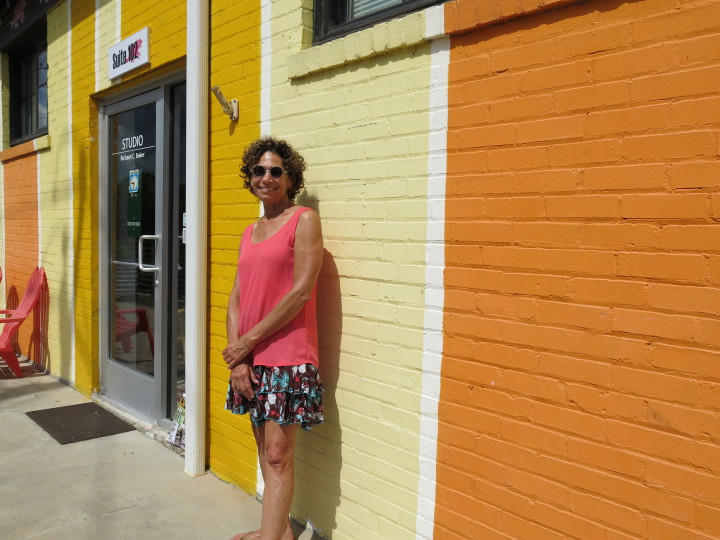
Skepticism, however, remains over what building owners define as anchor businesses — studio-based restaurants and breweries that offer respite for tired visitors. Those who disapprove of these additions point to the artists who’ve lost their spaces in order to make room for the likes of The Bull and Beggar, Wedge Brewing Co. and Asheville Guitar Bar. But for building owners these businesses play a crucial financial role within the rent structure. “If you buy a building and you have debt on it, you have to have some anchor tenants,” says Fischer. “That enables us to keep the artists’ rent pretty modest,” she adds, noting that some of the smaller studios at Pink Dog go for as little as $250 a month.
Strangers in a strange land
Within the district, skepticism also remains over newcomers. The purchase of the Phil Mechanic Studios, by Texas-based developer James Lifshutz, is highlighted by several in the district as a case in point. Many speculate that the building will be gutted and artists will be kicked out. While Lifshutz was unavailable to speak over the phone, his personal assistant, Debbie Fowler, relayed a series of emails between the developer and Xpress. Lifshutz writes that, “Being a real estate redeveloper, historic preservationist, and lifelong art lover, I decided to buy in the RAD.” He goes on to note that “the RAD is at a critical turning point. It can stay pretty much the way it is, a little sleepy, with artists and artisans working in their studios mostly unseen. But, with proper planning, key public investments, and a little luck, the RAD could develop into a superinteresting, walkable, urban neighborhood with both rental and for-sale residential options, quality arts retail, food, beverage, and other neighborhood amenities.”
For former Phil Mechanic artists like Celia Barbieri, the uncertainty that came with new ownership was enough for her to leave her studio and the RAD after nearly eight years. “It was very hard,” she recalls. “I was attached to my studio and attached to the community.” Barbieri says she remained optimistic upon the initial sale. But after Lifshutz’s early talks of meeting with and discussing the building’s future with its tenants, Barbieri says her emails to the developer either went unanswered or were rerouted to other members of his development team.
Stephen Lange, who has been in the district since 1999, was brought on as the building manager at the Phil Mechanic after Lifshutz’s purchase. While he was unable to provide specifics on the building’s future, he notes that Lifshutz has been true to his word, placing a moratorium on any major changes, including rent, for the first year. With respect to development, Lange refers to the words of his deceased friend, and RAD visionary, John Payne. According to Lange, Payne never saw development as a threat to the district. “His words were, ‘It’s the holly-hobbies and trustafarian hippies coming down here and doing everything but making better art that’s going to do the River Arts District in,’” recites Lange.
Paradise lost
“We’ll just have to adapt,” says Fischer, with respect to the future. “Because you can’t stop it.” She says her biggest concern is for the artists. She knows that, as the taxes and property values continue to go up on her building, there’s only one way for her to cover these costs: an increase in rent. “I don’t want it to be so unaffordable that artists can’t be here any longer,” she says. Fischer points out, however, that even now, many of the younger artists are going farther afield.
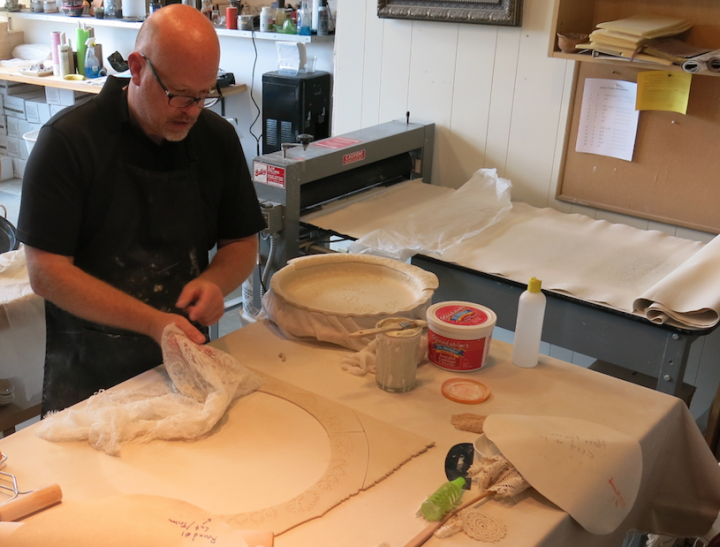
As an artist and maker, Hofman embodies Fischer’s point of adaptation. The potter has nearly completed a home studio. This will allow him to convert the studio portion of his space at Wedge into retail. “Obviously, not all artists here have the ability to do that,” he says. “And I love this area because there were all levels of artists.” These varying levels, however, are among the first casualties of the district. “Now that it’s changed and become more business-oriented, people entering into the art world aren’t necessarily going to be able to afford the rent,” Hofman says. “So you’re getting more advanced-level artists moving in, which means the quality of the art here is increasing, but there’s less of the mentoring effect going on.
“What I think is so special about the River Arts District is when you walk into a studio … you get to talk directly to the artists,” Hofman continues. “That’s a unique thing that’s going to be disappearing.” As with his own studio, Hofman foresees more artists converting their spaces into retail shops and galleries, in order to make rent.
Multimedia artist Julie Spalla echoes Hofman’s views, but comes at it from a different angle. “We’re small-business owners,” she says. “That’s what you are as an artist. You either take it out on the road, take it out online, or you take it out of our studio.” Spalla says she is fine with using part of her workspace for retail. She says she believes that if she can connect people with handmade items, it doesn’t matter what she calls her space.
Like Hofman, though, she recognizes the challenges for the millennial artists. “I’m constantly mentoring young artists around the community. I want them to grow and have a place as we did. But with the rents and everything … it does make it harder for [them] to come forward and be a part of it.”
The bottom line
What many of the artists and building owners consider a beacon of hope for the future of the RAD is that several of the buildings in the area are owned or co-owned by makers and artists, including Pink Dog Creative, Odyssey Center, Roberts Street Studios, David C. Stewart Fine Art, The Lift Studios, Northlight Studios, Studio 375, The Old Wood Co., Cotton Mill Studios, Curve Studios, The Foundation, Riverview Station and Wedge Studios.
Vice Mayor Gwen Wisler points out the city’s recent $25,000 grant to The Center for Crafts, Creativity and Design. That funding will support CCCD’s Artspace feasibility assessment project, which aims to keep arts and artists in Asheville. The project will study affordable housing for artists, the vice mayor says.
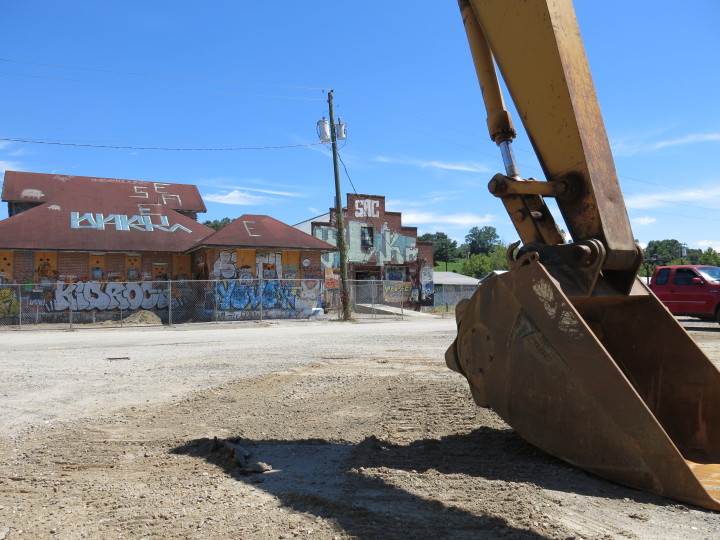
The city’s involvement with CCCD is part of the cross-pollination that Fosson says is essential for the continued development of the arts community. “It would be great if the CCCD, Asheville Arts Council, the RAD and UNC Asheville could all come together…that’s the future.”
Others look to remember the past. “We mustn’t forget many have come before us,” says Spalla. “We’re lucky to have what we have, even though it is sometimes a struggle.”
Meanwhile, the bustling foot traffic continues throughout the RAD. As Starck and his partners advance in the development of The Foundation, he ponders their role in the area. “It can’t be just purely about money,” he says. “Landowners have to realize there’s a value in having these creative spaces and culture and the environment it provides. You have to put that on your mental spreadsheet, as part of the bottom line.”
Hogan, who is familiar with Starck and his team, says he believes that their hearts are in the right place, but he worries about the financial realities that might impede these goals. His main concerns include affordability for emerging artists, as well as the integrity of the arts within the district. “How do we maintain a welcoming environment for young people who come out of UNCA, Penland or the crafts program at Haywood Community College? How can we encourage them to stay, give them a respectable place to work, live and do business? And how can we make it a vital and critical environment?”






Per usual, a well balanced article showing both sides. I love this magazine
I just wanted to give a perspective from a visitor who has come to Asheville every year for rhe last 8 years. I do not fit into any of the categories of people described above from the trustafarian hippie to the well heeled Europen art buyer. The first time we visited RAD we had rented on Chicken Hill nearby and visited Phil Mechanic studio first. It was a weekend but there were only a few studios open. When we asked about walking over to Clingman Cafe the comment was along the line of “no one really WALKS over!” We did walk though because we enjoy walking. We enjoy art although we cannot afford original works. So we buy the fridge magnets, postcards, and prints. The people and artists we did meet were more than friendly. Over the years we have since attended two RAD artwalks and welcomed the new sidewalks and the increasingly open artist studios on non RAD weekends. We always try to be respectful guests in the artists’ s studios and consider it quite a treat to be there when the artist is. This year especially we had many artists talk to us warmly while they were creating. We would love to be those visitors who could purchase thousand dollar pieces but we aren’t, but the RAD has always been one of our go to places in Asheville for delight of the senses and rejuvenation to spirit.
This article went in depth to give both sides of an important issue both for RAD as well as other parts of this area. Growth needs to respect the past, present and future. Thanks to Thomas Calder for this insightful report.